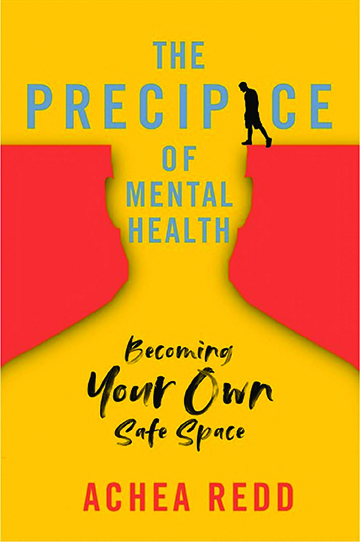
by Luke Schmaltz | Sep 30, 2022 | Uncategorized
 by Luke Schmaltz
by Luke Schmaltz
The cruel hand of time spares no one and is well known for putting the squeeze on the nether regions of older men. Benign Prostatic Hyperplasia (BPH) — aka an enlarged prostate — is a fact of life for many but does not have to be the case for all.
Symptoms include an abnormally frequent need to urinate, especially at night, as well as difficulty beginning the urination process, along with a weak stream and inability to fully empty the bladder. The prostate surrounds the urethra, and as it enlarges it applies increasing pressure which can hinder urinary flow and control.
Modern medicine is vague when citing causes for BPH, but according to mountsi nai.org, “The actual cause of prostate enlargement is unknown. Factors linked to aging and changes in the cells of the testicles may have a role in the growth of the gland, as well as testosterone levels.”
Western institutional medicine is quick to champion pills and surgery as the premier solutions to BPH. Yet, for those who distrust big pharma and scalpel-happy surgeons, there are a variety of ways to reduce an enlarged prostate and to possibly avoid the condition entirely.
Saw Palmetto Extract

Supplement containing extract from the saw palmetto plant can reduce an enlarged prostate.
The NIH (National Institutes of Health) recently studied the effects of two different preparations of this plant on BPH. The separate tests showed results which were more effective than a placebo. This isn’t entirely convincing, yet American Family Physician (aafp.org) reports, “Studies have demonstrated the effectiveness of saw palmetto in reducing symptoms associated with benign prostatic hyperplasia. Saw palmetto appears to have efficacy similar to that of medications like finasteride, but it is better tolerated and less expensive. There are no known drug interactions with saw palmetto and reported side effects are minor and rare.”
Stinging Nettle
The Mt. Sinai Health Library reports that stinging nettle has been used for hundreds of years, primarily in Europe, to treat early symptoms of BPH as well as other urinary tract problems. The Stinging Nettle web page reports, “Studies in people suggest that stinging nettle, in combination with other herbs (especially saw palmetto), may be effective at relieving symptoms such as reduced urinary flow, incomplete emptying of the bladder, post urination dripping, and the constant urge to urinate.”
Hydrotherapy

Men over 50 can choose natural, non-invasive options for treating an enlarged prostate.
A hot-and-cold immersion practice known as a sitz bath, as reported by Prostate Cancer 911, is a time-tested method for shrinking an enlarged prostate. Men are instructed to prepare two baths side by side. The first bath is heated to 105-155 degrees F and treated with 1/2 cup of Epsom salt while the second is maintained at a chilly 55-85 degrees F and treated with several drops of lavender essential oil. You enjoy the hot bath for three minutes, then endure the cold one for one minute and repeat two more times.
The report also states, “This is a natural way to shrink the prostate and soothe it. Hydrotherapy is commonly used as a method of prostate enlargement treatment, especially for relieving symptoms. A sitz bath increases blood circulation in the pelvic area and eases the constriction of the urethra.”
Exercise
Kegels are simple muscle contractions used by men and women to strengthen musculature in the pelvic region. For men, the practice can help strengthen the prostate and surrounding tissues, and thus increase bladder control. To perform a Kegel, simply squeeze your bladder as though you are attempting to stop the flow of urine mid-stream. Hold for five seconds and repeat 10 to 20 times per day.
Men are encouraged to begin a moderate daily regimen and slowly increase the amount of reps per day rather than overdoing it at the onset — just as with any other type of new exercise. In a report titled Kegel Exercises for Men, UCLA Health states, “Building up the strength in your pelvic floor muscles can help you gain better control of your bladder and urine flow.”
As for comprehensive exercise which engages the entire body, Harvard Health reports, “Based on questionnaires completed by more than 30,000 men in the Health Professionals Follow-up Study, researchers found an inverse relationship between physical activity and BPH symptoms. Simply put, men who were more physically active were less likely to suffer from BPH. Even low- to moderate-intensity physical activity, such as walking regularly at a moderate pace, yielded benefits.”
Testosterone Replacement Therapy (TRT)
According to a May 2019 Endocrine Extracts report published by Bio Scientifica, “Recent evidence shows that low, rather than high T [testosterone] is associated with BPH/lower urinary tract symptoms (LUTS).” The report discusses results of a TRT trial in 120 men awaiting BPH surgery.
The subjects who received daily applications of T gel for six months showed improvement; “TRT arm was characterized by a significant decrease in ultrasound markers of prostate inflammation, including arterial velocity and acceleration.” The study concluded, “Testosterone replacement therapy is able to reduce prostate inflammation in men with BPH, metabolic syndrome, and hypogonadism: preliminary results from a randomized placebo-controlled clinical trial.”
Diet
The Prostate Cancer Foundation (PCF) recommends a diet of cruciferous vegetables (broccoli, kale, cauliflower, etc.), berries, fish, plant-based protein (soy), beans, nuts, green tea, coffee (two cups per day), and cooked tomatoes. The PCF also cautions men over 50 against sugar in any form and processed carbohydrates while opting for moderate consumption of animal-based protein.
Essentially, this is known as the Mediterranean diet. The report also states, “PCF-funded epidemiologist Lorelei Mucci, M.P.H., Sc.D., at Harvard T.H Chan School of Public Health notes that people in Mediterranean countries not only eat more vegetables and fruits… they also eat less fatty foods, processed food, and red meat – categories that can ‘increase insulin resistance, increase inflammation, raise cardiovascular risk, and be a part of a dietary pattern that may increase obesity, as well.’”

by Luke Schmaltz | Sep 30, 2022 | Uncategorized
Distressed, Depressed? Ask For Help! “One of the biggest defects in life is the inability to ask for help.”
 by Luke Schmaltz
by Luke Schmaltz
According to Science.org., the human brain has changed very little over the last 35,000 to 100,000 years. Yet, the degree and variation of stimulation and stress it is currently being subjected to has increased exponentially — especially over the last century.
In effect, the human brain is being bombarded by the wholesale results of its own sophistication run amok.
Our brains get overloaded, the veritable bandwidth therein gets saturated, and some people’s minds become sick. The circumstances can be equated to overeating and getting a stomach ache, but the consequences of a “mind ache” are far more devastating.
Crisis Created

Seek Safe Space: Achea Redd warns constant rumination on the same thought can cause you to go into hyper focus, heart racing, and lack of focus.

Brain Game: Our brains get overloaded, the veritable bandwidth therein gets saturated, and some people’s minds become sick.
The human race, particularly Western society, is in a mental health crisis. More and more people are finding themselves unable to cope with the pressure, responsibility, confusion, misinformation, and a myriad of other stimuli which are rampant in everyday life.
Yet, the mess can’t be unmade by dumping prescription pills into the void. We have to dig ourselves out of this hole with the same tool that got us here in the first place — our humanity.
People from any walk of life, at any time, can become saddened, distressed, depressed, and yes — suicidal. When the walls close in and you’re all alone, when life doesn’t seem worth living but a tiny part of you wants to turn the ship around and find a way out of the darkness, the best course of action is to ask for help.
How To Begin
Dr. Arin N. Reeves, author of “In Charge,” a guide for women tired of being tired, offers a guide to exhaustion as it relates to mental health. She says the problem is it’s hard to tell when exhaustion is not just exhaustion. While more open about mental health, “we still aren’t forgiving or patient with people who are in that gray zone. People are pressured to be okay instead of being okay with not being okay long enough to figure out the problem.”
The top roadblocks stopping people in crisis are stigma and shame, suggests Dr. Bill Howatt. The three types of shame, the psychological expert says are, “Self, peer, and organizational.” When a person doesn’t feel “good enough” they get caught in shame. Thus, they don’t have empathy for self and others.
Motivated to get away from pain, they focus on symptom relief such as drinking. The CEO of Howatt HR says we need to educate people that mental health is no differ than the flu. “We can have a physical flu, and with support it will pass. An emotional flu can pass as well with rest and support,” he enlightens.
When To Act
Warning signs of a looming mental health crisis are many and vary in individuals. Achea Redd, author of the recently published book titled, “Be coming Your Own Safe Space,” suggests what to watch for based on personal experience.
coming Your Own Safe Space,” suggests what to watch for based on personal experience.
She says to watch for these indicators: Sudden sleep pattern changes (either too tired or not able to sleep), change in appetite, not enjoying the things you used to, headaches, gastrointestinal issues, or stomach pain.
“Constant rumination on the same thought can cause you to go into hyper focus, heart racing, and lack of focus,” Redd warns.
Where To Turn
Licensed Social Worker Tina Rushing says, “I always say professionals are vital in a crisis. Loved ones can help [and] be there for you but mental health professionals have the proper tools to make the difference.” The PRSL website posts an extensive list of international resources available at any time, anywhere for those in crisis.
For example, the Crisis Text Line can be accessed in the U.S. by simply texting “HOME” to 741741, and the person will be connected (for free) to a mental health support network. “I have personally used it when I was spiraling into a panic attack after a fight with a loved one,” Rushing says. “They helped me navigate my thoughts and emotions and worked with me to sort out why I was spiraling afterwards.”
Resources on the PRSL website also include help lines for veterans (1-800-273-8255 press#1), domestic violence (text START to 88788), rape abuse and incest (1-800-656-4673), eating disorders (1-800-931-2237), suicide prevention (text TALK to 741741); LGBTQ+ (text START to 678678); plus many more options.
What To Say

Mental Tune-Up: The music community is noted for taking care of one another. Punk Rock Saves Lives focuses on health and wellness, with emphasis on mental health.
Dr. Howatt offers sound advice for those ready to voice their need for help. Begin with the understanding that a mental health crisis is an intrapersonal impairment of emotions and thoughts that drive behavior. The person does not need to know what is wrong or why they feel the way they do. “All they need to do is say ‘I am struggling w

See A Doc: Mental illness is no different than the flu, says Dr. Bill Howatt. Getting help is a good choice, so go see a doctor. Copyrighted Kayla Hannaford
ith my emotions and thoughts, and I am not sure what to do. I need some help [in order] to figure out what I can do.’”
Dr. Arin N. Reeves adds: “It’s helpful to have one person you really trust who you can share your plan with and ask them if they can do some of the communicating for you. If not, and you are trying to explain the crisis, focus on concrete things that can help you describe what you are going through.”
It’s tough for professionals to grasp your feelings in crisis. They need to hear facts they can wrap their arms around. Examples: “I haven’t been able to eat in two days, or I have not been able to sleep for more than two hours at a time, or I cannot make myself get out of the bed.”
Solving The Stigma
Western society’s obsession with perfection and the pursuit of an unattainable status quo, by default, places judgment, shame, and condemnation on those suffering from mental health conditions.
“Mental health has been looked at as a moral weakness for many years. To change the culture requires education and senior leaders to make mental health prevention and mental illness a priority,” explains Dr. Howatt. His point: There is nothing wrong with getting help. It is a good choice and no different than going to the ER, if you have a broken arm.
So, get to a doctor. Assess yourself. Pay attention to how you are feeling and take pain seriously. You are not a hero for hanging on when you should be letting go and getting help.

by Luke Schmaltz | Jun 26, 2022 | Main Articles
“Justice is indispensably and universally necessary, and what is necessary must always be limited, uniform, and distinct.”
— Samuel Johnson
 by Luke Schmaltz
by Luke Schmaltz
Immigration policy and enforcement in the United States is ensnared in a three-way collision between the inertia of the Legislative branch, the duty of the Judicial branch, and the will of the Executive branch. Plainly put, Congress writes the laws on immigration, the Department of Justice enforces those laws, and the President tells them how to do it.
This entanglement of the three branches of government — which were originally designed to be “separate and independent” — sits at the heart of the Immigration Courts’ struggle to efficiently apply due process and to fairly administer justice.
The Long Arm Of The Law

Many people attempting to immigrate to the United States do not have a concrete plan of how to proceed.
Meanwhile, a large contingency of professionals across the vocational spectrum are immersed in this deluge, attempting to navigate the confusion and find some currency of reason. These individuals include judges, lawyers, clerks, administrators, detention facility staff, Federal agents, law enforcement staff and many others.
Additionally, the people embroiled in the system who are experiencing the most uncertainty are immigrants (lawfully admitted foreign nationals), non-immigrants (lawfully but temporarily admitted foreign nationals), refugees, and asylum seekers. The latter two distinctions are people who are outside their home countries and unwilling to return due to persecution or a well-founded fear thereof. The common thread between all of these folks is they are trying to find a way to remain in the United States.
Whether the wishes of noncitizens are granted is determined by immigration policy, which is governed by the Immigration and Nationality Act (INA). While this piece of legislation has been amended numerous times since its inception in 1952, Congress has demonstrated a profound inability to engineer the bipartisan cooperation necessary to make improvements which match the current demand.
Staggering Numbers
According to a June 12 article by Claire Moses of The New York Times, “The number of people crossing at the [southern] border is at the highest it’s been in at least two decades.” These individuals are arriving from places such as Mexico, Guatemala, Honduras, Cuba, Venezuela, Nicaragua, El Salvador, Peru, Haiti, and most recently, Ukraine. The vast majority are attempting to escape from poverty, authoritarian governments, natural disasters, gang violence, and war, while seeking economic opportunities.
A May 17, 2022, report issued by U.S. Customs and Border Protection (CBP) states that, during the previous month, U.S. Border Patrol agents recorded over 201,800 unique encounters at the southern border alone, along with 157,555 encounters nationwide in addition to 32,288 encounters by Office of Field Operations officers at various ports of entry. While some will be granted asylum, most will be detained and eventually removed (sent back to their home countries).
Unchecked and unbalanced, today’s Immigration policy hinders the courts therein from effectively handling the above numbers in anything resembling an efficient manner. The current system is fraught with hindrances of every sort, including a massive backlog of cases due to Covid-19 restrictions, staffing shortages, disruptive Executive branch policies, Congressional inaction, and political interference — to name a few.
An Immersed Perspective

The American Bar Association is proposing a set of solutions for streamlining the Immigration Court system.
While the immigration issue is a nationwide concern, a large number of cases are heard in Colorado in the Denver and Aurora Immigration Courts. Brian Clark is a Colorado attorney based in Alamo Placita, whose legal practice is focused on removal defense of noncitizens. Clark offers the unique perspective of a working professional who, on a daily basis, navigates and interprets the current set of policies for the intended benefit of his clients.
Clark offers detailed discourse on the obstacles faced by foreign nationals who are currently attempting to emigrate to the U.S. “ Under the current system there are short-term means that allow foreigners to come to the United States, such as tourist visas and student visas, but they’re intended to be temporary (although many people do overstay them),” he says. “Most foreigners attempting to emigrate to the U.S. in any long-term sense don’t really have a straightforward avenue for doing so unless they marry a U.S. citizen or can find a U.S. company to sponsor them as a skilled foreign worker.
“This, then, leaves the asylum process as a kind of default for many noncitizens who have left their countries of origin and have come to the United States, particularly for those from less developed countries. However, U.S. asylum law is very particular and tricky, with specific requirements that the person was persecuted in their country of origin based on certain immutable qualities about them (among other factors) — so a lot of noncitizens who come here for perfectly understandable reasons end up having a hard time showing that they qualify for asylum under the law. So, the primary obstacles faced by foreigners looking to immigrate to the United States are the lack of viable legal options available to them under current U.S. immigration law,” he explains.
Thank You, Mr. President
Clark faces myriad challenges as an Immigration Attorney, many of which stem from the tumult which arises every time a new President moves into the White House. “As a lawyer, when a prospective client comes to you seeking legal representation or counsel you have to assess the facts of their situation and candidly advise them of the viability of their case in light of the law,” he says. “That’s really tough to do when the interpretation, application, and enforcement of the law changes every time a new U.S. President is sworn into office, which is what has happened in recent years.
“A noncitizen who applied for asylum during the Obama administration may have had a strong case at the time the application was filed; and then after the interpretation of the law shifted during the Trump administration their case may have become markedly weaker as it moved through the Immigration Court process; but then during the Biden administration their asylum case may suddenly be revived and viable again. So, how strong a given case may be can depend on who the U.S. President happens to be when the case is presented in front of an Immigration Judge. That’s been one of the bigger challenges to practicing U.S. immigration law in the last few years — the unpredictability of the state of the actual law itself.”
Tumultuous Tides
Clark offers a front-row account of how the shifting balance of Executive power creates the see-saw effect which is so pervasive in today’s Immigration Courts. “In the last few years,” he begins, “The Department of Homeland Security has vigorously enforced certain aspects of immigration law under one administration, and then when the Presidency went to the other major party, they’ve been directed by the new administration to backtrack and dismiss the very same cases they were under orders to prosecute a couple of years ago. It’s anything but optimal, but immigration policy and enforcement have ping-ponged back and forth during the last three presidential administrations. And if the party in control of the White House changes again in the next election, then enforcement and application of the laws may well revert 180-degrees b

The U.S. Department of Homeland Security is run by the Department of Justice.
ack to what it was under the last administration, and all the cases that are being administratively closed and dismissed right now could be reopened again by the next administration.”
Not What It Seems
Among the frustrations of Attorney Clark, are the inaccurate generalizations by which the immigration issue is portrayed in mainstream culture. “I’m not a partisan idealogue,” he begins, “I got into immigration law in part because as a young person I lived abroad, and I fruitlessly tried to navigate another country’s immigration system without an attorney. In the current polarized American cultural climate, I find it tedious that immigration is such a hot-button issue that both major political parties tend to cast in sweeping hyperbolic binary terms. In reality, actually practicing immigration law is not about broad categories of ‘good guys’ versus ‘bad guys’ any more than any other part of the legal system is. It’s complicated and nuanced.
“Some noncitizens in the U.S. really, really get screwed over by the system and it’s deeply unfair and unjust how much the current structure of the law is stacked against them — but then there are other noncitizens who are appropriately removed from the country after they have had their day in court. That’s kind of how all aspects of the law are, in reality; individualized and particular to the people involved. Immigrants, as a group, are not a uniform cohort in almost any sense, so I find it irritating when moral grandstanding and fearmongering are done on behalf of, or against, ‘immigrants’ as though that term applies to a homogenous group of people. It does not,” he explains.
Hope On The Horizon?
Rather than concede to the idea that Immigration policy is destined to stay where it is, Clark offers poignant observations along with constructive ideas on how the ship could be righted. “The Immigration Court system is housed within the Justice Department,” he begins. “So, it is not really an independent court system like civil and criminal courts. That means that Immigration Judges are unfortunately deprived of full independence and autonomy, which can create problems when the Attorney General decides that an across-the-board change in the interpretation or application of the law is to be made. The current Immigration Court system is overwhelmed by a massive backlog of cases, which frustrates and exhausts everyone involved with it; the lawyers, the judges, the clerks and administrat

The ICE Detention Center in Aurora has a massive backlog of cases waiting to be heard due to Covid-19 setbacks.
ors, and the noncitizens whose cases it is supposed to adjudicate. The administrators of the Immigration Courts appear to be focused as of late on tackling the case backlog, which is certainly necessary in the short-term, but it’s not a permanent solution to the problems with the Immigration Courts.
“The most reasonable thing to do to fix the Immigration Courts at this point would be for Congress to pass reform legislation, and in so doing to follow the recommendations made repeatedly by the American Bar Association in the last few years — by making the Immigration Courts into proper independent Article III Courts rather than a part of the Department of Justice. Doing so would, at a minimum, help create more stability and consistency between different presidential administrations. Congress could also reform U.S. immigration law to allow for more temporary work options and other non-permanent avenues for otherwise law-abiding non-citizens to live and work in the United States lawfully. I won’t hold my breath though.”

by Luke Schmaltz | May 20, 2022 | Travel
High Ridin’ Todd Bannister
 by Luke Schmaltz
by Luke Schmaltz
Todd Bannister is a competitive dirt bike rider, participating in the Monster Energy AMA (American Motocross Assn.) Supercross Championship.
For the uninitiated, this extreme iteration of motocross features pyrotechnics, huge jumps, and hairpin turns on a track of dirt and mud that looks like it is designed to punish as much as it is to entertain.
Meanwhile, stadiums full of exuberant fans cheer on their favorite riders and savor the carnage when the inevitable body-mangling pileups take place.
Road Worthy
Although he was born in Colorado Springs, Bannister currently resides in Eaton, Colo. That is, when he isn’t out on the road pushing his personal boundaries to further his position in the overall rankings.
Bannister competes as a “privateer” which means he is not a corporate-sponsored, factory-backed rider with a huge team of technicians, an enormous budget, and the high-profile hoopla that comes with all of the hype.
To the contrary, Bannister exudes positivity, humility, and a genuine smile that no doubt makes his handful of sponsors, his family and his fellow member of Team Faith proud to be in his corner.

Doggone Exciting: Colorado hero, shown with his riding companion, competes in the Supercross circuit with a winning smile.
Vision And Purpose
Team Faith was founded in 1994 by Brian O’Rourke, a former high-level competitor in the sport who now serves as Manager and Team President.
O’Rourke’s vision is to imbue the tremendous impact extreme sports stars have on young people with a positive, constructive message.
After all, athletes in Supercross and other arenas are highly influential, especially through social media, and O’Rourke vows to “influence the influencers with the message of Christ.”
Emulate Your Hero
O’Rourke’s team consists of Road Pastors, Pit Pastors, mechanics, former riders, his wife and PR Director Monica, and a handful of professional riders. As a rider for Team Faith, one of Bannister’s roles is to spread the good word while competing at his highest level in Supercross.
While being guided by his team’s evangelical endeavors, Bannister also looks to his personal Supercross hero, Trey Canard, for human inspiration. Canard is a former five-time Monster Energy AMA Supercross Champion (among other accomplishments) while also holding the unofficial title of “The Unluckiest Rider Ever.”
His crash reel plays like a cautionary video shown in a driver’s education class or something a doting parent would show to a child showing interest in motorcycles. Yet his personal faith and positive outlook always helped him overcome adversity and forge onward.
Returns From Injury

Up In The Air: Bannister soars above the track in dirt bike competition. The sport requires monstrous jumps and pinpoint landings. Photo: Dave Black
“That guy [Canard] is such an awesome dude,” Bannister begins. “His faith with Jesus has taught me a lot. I like to put that towards my racing and my career, especially with my team [which is] a ministry. He always had such a great attitude on life no matter what. Whenever he had something go wrong, he put his best foot forward and just kept on going. I always put [him] as someone to strive to be like,” Bannister explains.
Just like his hero, Bannister recently suffered a shoulder injury which sidelined him for most of the 2022 season.
April 30th at Empower Field at Mile High marked his return to the Supercross track and doing so in his home state made the event extra special.
“Colorado has its own feel,” Bannister explains. “The track here [at Mile High] is a little harder packed and the altitude has an effect too. It’s high altitude and I like it,” he says with a grin.
Breaking Bread

Feeding The Faith: Team Faith spreads the good word and feeds hungry riders at event competitions.
Understandably, Bannister likes high-energy music, and orchestrates his pre-race ritual accordingly. “I’m a really big punk rock guy,” he explains. “I also like pop-punk, so I usually go for a lot of Blink 182.”
As a member of Team Faith, Bannister also participates in the weekly ministry-based practice of feeding anyone and everyone in the race paddock (race team staging area) who might need a meal. With all of the privateer racers on a budget, it can amount to quite a few people.
“My favorite thing we cook that I like is the chicken because it’s healthy,” he laughs, “I go with that and a salad. I keep it kind of light because I have to race. I don’t care who you are, you’re always going to be nervous to a certain extent, so I try to keep the food down.”
Hometown Hero
A hometown hero, Bannister is quick to describe his love for his home state, “Colorado has its own feel. Nothing is like home,” he says.
“This sport requires huge jumps,” he notes. When Bannister is soaring above the track, for just a moment, he says, “A lot is happening really quickly … you just pinpoint a line and you do it in, literally, like, half a second.”
He sticks the landing and rides on.

by Luke Schmaltz | May 20, 2022 | Main Articles
“Fraud is the daughter of greed.”
 by Luke Schmaltz
by Luke Schmaltz
The continuous exchange of money for goods and services is a 24-hour, seven-day-a-week fact of life. The neurology of commerce pulses onward like the relentless heartbeat of the human race. But, like seagulls swooping down on a fishing boat, like termites eating at the frame of a house, like flies laying eggs in an open wound — the fraudsters and scammers are at work ’round the clock, attempting to gain access to what is yours in order to make it theirs.
As technology becomes more and more sophisticated, so too does the savvy of hackers and scammers. Here are a few of the top signs of trouble which are afoot today.
Job Robbers

Savvy Scammers: Be alert for warning signs of a scam. Rip-off artists are working to access what is yours and make it theirs.
The cruelty of a rip-off artist knows no bounds, and if you think no one would try to scam a person who is simply trying to better their position in life by looking for a job — think again.
This scheme starts with a text message offering the recipient a job with a reputable company. This is typically described as a nonspecific position such as “customer service representative.” The person on the other end will say they saw your profile on a job board such as Indeed or ZipRecruiter.
Once you express interest, they will say the hiring manager will need to interview you via Google Hangouts. During the “hangout” they will inform you that you have been hired and proceed to request personal information for your background check, paycheck direct deposit, etc.
Takeaway: Any job offer which comes to you via text from an unknown person should be considered a scam.
Amazombies

Urgent Amazon Bluff: Be wary of urgent emails, text messages, and phone calla about your Amazon account.
One of the top drivers of perpetual, sleepless commerce is Amazon. The online behemoth of retail owns a massive market share so naturally; Amazon scams are proportionately prevalent. In fact, the top news item in this arena is that Amazon scams are up 500% from last year.
Urgent communications about your Amazon account may arrive via email, text message, or phone call. The text or script will say there is a “problem” and that your account must be verified and the matter is “urgent.”
Clickable links will lead you further into the phishing web, as will calling a phone number provided by the message.
Takeaway: Always access your Amazon account via your device and initiate communication from the website chat or messaging portals. Amazon does not send emails or text message with “click here” prompts.
I’ll Be You
People who post notices online for missing pets, items for sale, or requesting specific makes and models of cars or musical instruments can be targeted by scammers pretending to be on the lookout for fraud.
The person will contact you and express concern that they want to “make sure you’re not a scammer.” In order to proceed, they will then send you a verification code from Google Voice and ask you to read it back to them.
In doing so, they are capturing your unique voice imprint and setting up a Google Voice account in your name so that they can continue to perpetuate what they claimed to be wary of.
Takeaway: Never read back verification codes to anyone over the phone.
The Sky is Falling

Phony Phone Calls: Charlatans ask you to read back verification codes to capture your voice imprint and make it their own.
The rise in extreme weather events and the vigor with which the news reports them has viewers highly attuned to the suffering of others.
Scammers see sympathy as weakness and as soon as a hurricane gets named by the World Meteorological Association, a “relief fund” in its name is poised to be launched the moment the storm makes landfall. The same is true with wildfires, tornadoes, and the typhoons.
Charity organizations and relief efforts are monitored by watchdog groups such as the Better Business Bureau, CharityWatch, and CharityNavigator. If you are contacted and asked to donate, you should first verify the legitimacy of the charity through at least one of these organizations. Also, you can Google the charity’s name followed by the word “scam” and any reports of fraudulent activity will come up.
Takeaway: A legitimate charity will never apply a high-pressure hard sell when asking for a donation.
The Metacurse
The latest trend in digital lifestyles, while buzzing with fascination and excitement, is rampant with new opportunities for scammers looking to swindle distracted, googly-eyed gawkers.
This relatively new construct using headsets, virtual reality, and avatars in place of analog interaction has an “emperor’s new clothes” appeal for fraudsters. The avatars of coworkers, customers, customer service reps, and sales agents can all be easily impersonated by hackers.
Interaction based solely on digital identities places all participants in jeopardy of being easily played.
Takeaway: If it seems too unreal to be true, it probably is.



















